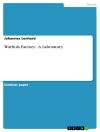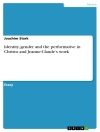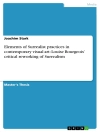In ‘What Is Art?’, Leo Tolstoy embarks on a profound exploration of the nature and purpose of art, questioning its societal functions and moral implications. This seminal treatise combines philosophical insight with Tolstoy’s distinctive narrative style, marked by clarity and simplicity. He critiques contemporary trends in art, arguing for a more authentic expression of human experience that transcends mere aesthetic pleasure. Positioned within the context of 19th-century Russian thought, the work engages with prevailing notions of beauty and elitism, advocating for art that fosters universal connection and empathy. Tolstoy, a literary giant renowned for masterpieces such as ‘War and Peace’ and ‘Anna Karenina, ‘ was deeply influenced by his personal spiritual journey and commitment to moral values. His disillusionment with the artistic elite, coupled with his yearning for a more genuine and accessible form of expression, prompted him to write this insightful critique. His exploration not only reflects his own artistic philosophy but also his belief in the transformative power of art as a vehicle for social change and human solidarity. Readers fervently interested in the relationship between art and morality will find ‘What Is Art?’ essential. Tolstoy’s rigorous yet accessible arguments encourage reflection on the societal responsibilities of both the artist and the audience. This book invites its readers to reconsider their understanding of cultural production, making it a vital addition to the libraries of artists, philosophers, and anyone seeking to grasp the moral dimensions of creativity.
关于作者
Count Lev Nikolayevich Tolstoy, known to the English-speaking world as Leo Tolstoy, was one of the most acclaimed Russian writers, whose novels and moral philosophy left an indelible impact on literature and thought across the world. Born on September 9, 1828, in Tula Province, Russia, to an aristocratic family, Tolstoy’s expansive body of work includes such monumental novels as ‘War and Peace’ (1869) and ‘Anna Karenina’ (1877), which not only probe the depths of human emotion but also explore the complex social fabric of Russian society during the 19th century. Tolstoy’s literary style is distinguished by intricate character development and a profound understanding of human motivations, underpinned by his keen observation of social intricacies and individual psychologies. His narrative techniques often included a broad canvas that examined the minutiae of daily life, as well as larger, philosophical inquiries into existence and morality. In his later years, Tolstoy transitioned from fiction to more directly philosophical and social writings. In ‘What Is Art?’ (1897), Tolstoy confronts the very nature of art itself, proposing a framework for judging its value and effectiveness based on the criteria that true art must be intelligible and sincere, promoting the religious perception of goodness for its audience. His radical Christian anarchistic views found in works like ‘The Kingdom of God Is Within You’ (1894), influenced prominent figures such as Gandhi in nonviolent resistance. Tolstoy’s literary masterpieces, his outspoken social activism, and his philosophical treatises continue to resonate, securing his legacy as a titan of literature and a keen observer of the human condition. He died on November 20, 1910, but his works remain a cornerstone of the literary canon.












